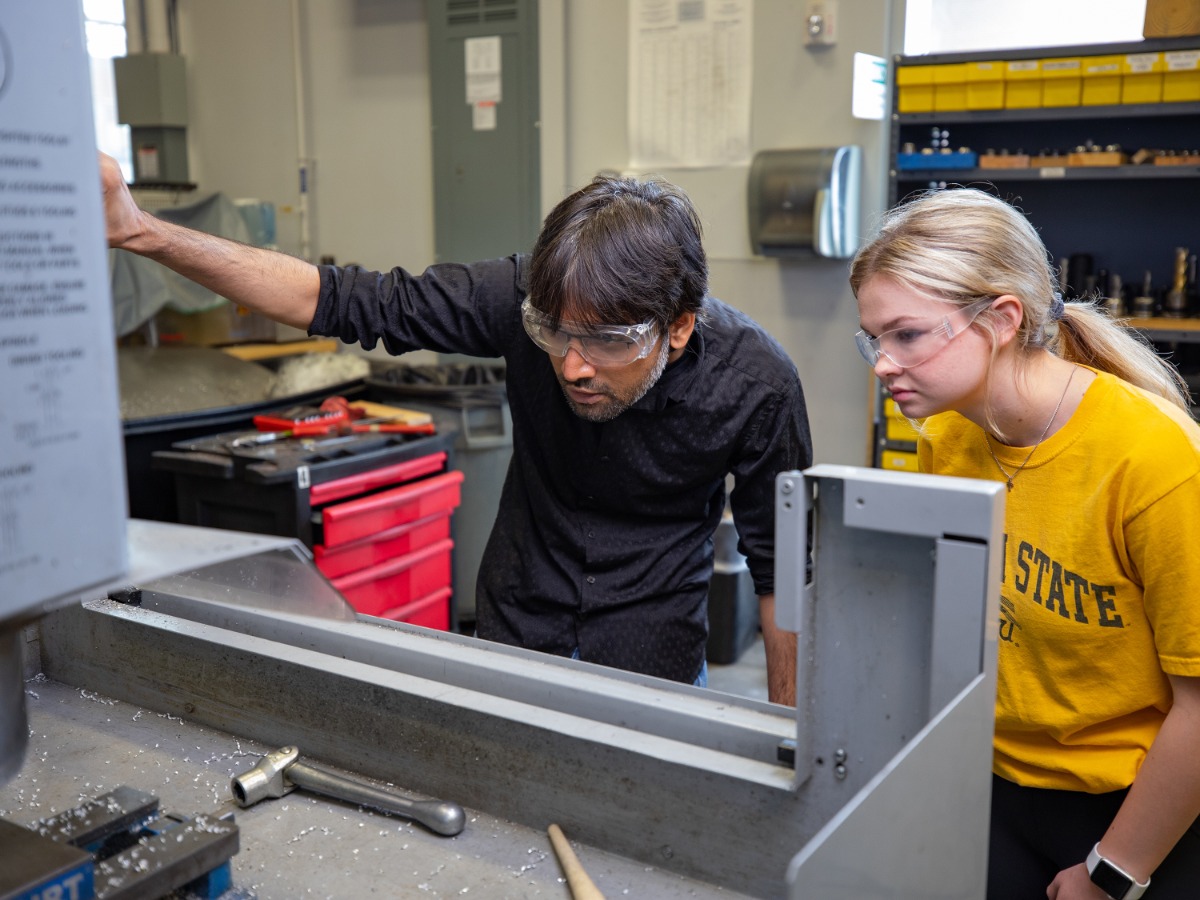As Wichita State University celebrates record enrollment, the university is bolstering its student success initiatives to increase graduation rates. As part of those efforts, the National Science Foundation has awarded WSU researchers $750,000 to increase persistence rates among low-income engineering students, particularly those who are interested in advanced manufacturing careers.
The project — titled “Improved Persistence to Degree Completion through Enhanced Engineering Identity” — was borne from statistics that show that low-income students have lower degree-completion rates than their typical-income peers in engineering. It has also been shown that engineering students who identify with the profession have a greater likelihood of graduating.
“When we looked at low-income and typical-income students going from sophomore to junior year, we see that the typical-income group seemed to do much better than the low-income group,” said Dr. Gary Brooking, chair of engineering technology at Wichita State and principal investigator. “And when we look at graduation data, low-income students are at a much lower graduation rate than our typical-income students.”
The grant is aimed at helping turn that trend around, said Dr. Jan Twomey, associate dean of the WSU College of Engineering and one of the co-principal investigators on the grant.
Recruitment for the program will begin while the students are in high school. Brooking said the team will work closely with high school teachers and guidance counselors to identify low-income, high-achieving students who are interested in engineering as a career.
“We will look at things like GPA, but those aren’t always the best indicators of a student’s ability,” he said. “We really think it’s the teachers who interact with them in high school who are going to be critical in identifying candidates for this program.”
Easing students into engineering
The six-year grant will provide funding for three cohorts, a total of 24 students, eight students per year, beginning with the 2023-24 academic year. Each student will receive an $18,750 scholarship over four years. For the first year, students will receive $10,000, $5,000 the second year, $2,500 the third year, and $1,250 the final year.
For their first year at Wichita State, Brooking said, students will begin the process of getting acclimated to Wichita State and settling into campus life. They’ll also be paired with industry and faculty mentors.
“What we’re trying to do is to provide them with lots of opportunities to work alongside practicing engineers at a very early stage in their college education,” he said. “For freshmen, we’re trying to get them partnered with industry and faculty mentors so that by the time they enter their sophomore year, they identify as engineers and with their long-term chosen career.”
The mentorship will not only help students learn more about their chosen career, but it will add relevance to difficult courses.
“We’re trying to get them connected to industry and industry mentors so they can better identify with their career pathway and help them get through non-engineering classes, which seem to be a big stumbling block for some of our students, especially the ones who are from low-income and first-generation who don’t have those voices at home and experiences that are helping them through that,” Brooking said.
Front-loading the lion’s share of the scholarship in the students’ first year allows them to focus on their studies and mentorship experience.
“The scholarship is supposed to help them so they don’t have to work and instead focus on their coursework, therefore increasing the likelihood that they’ll graduate,” Twomey said.
After the first year and once students have established a connection with their industry partner, it’s expected that they’ll begin some kind of paid applied learning experience. The scholarship amount will taper as students are working within their chosen industries.
“Then by the end of that first year, they’ve developed some kind of relationship with industry, and they’ll get some form of co-op experience in that summer,” Brooking said. “So the scholarship amount drops slightly sophomore, and it continues to drop until graduation. But by then, we expect them to be fully engaged in industry and earning income through a co-op.”
Researching persistence
Throughout the six years of the project’s timeline, the research team will be gaging if the scholarships and mentorship opportunities are helping students persist through to graduation, eventually filling employers’ need for engineers.
“Everyone is losing engineers right now,” Twomey said. “It’s been shown in the literature that if they identify as an engineer early on, then those students will persist. We will have all kinds of opportunities for those students to begin interacting with industry folks and doing actual engineering work.”
While this project is specific to low-income engineering students, the research addresses the nationwide issue of student persistence in higher education.
“We’re assessing our program so that we can share our outcomes with other universities that may want to do the same,” Twomey said.


 File
File